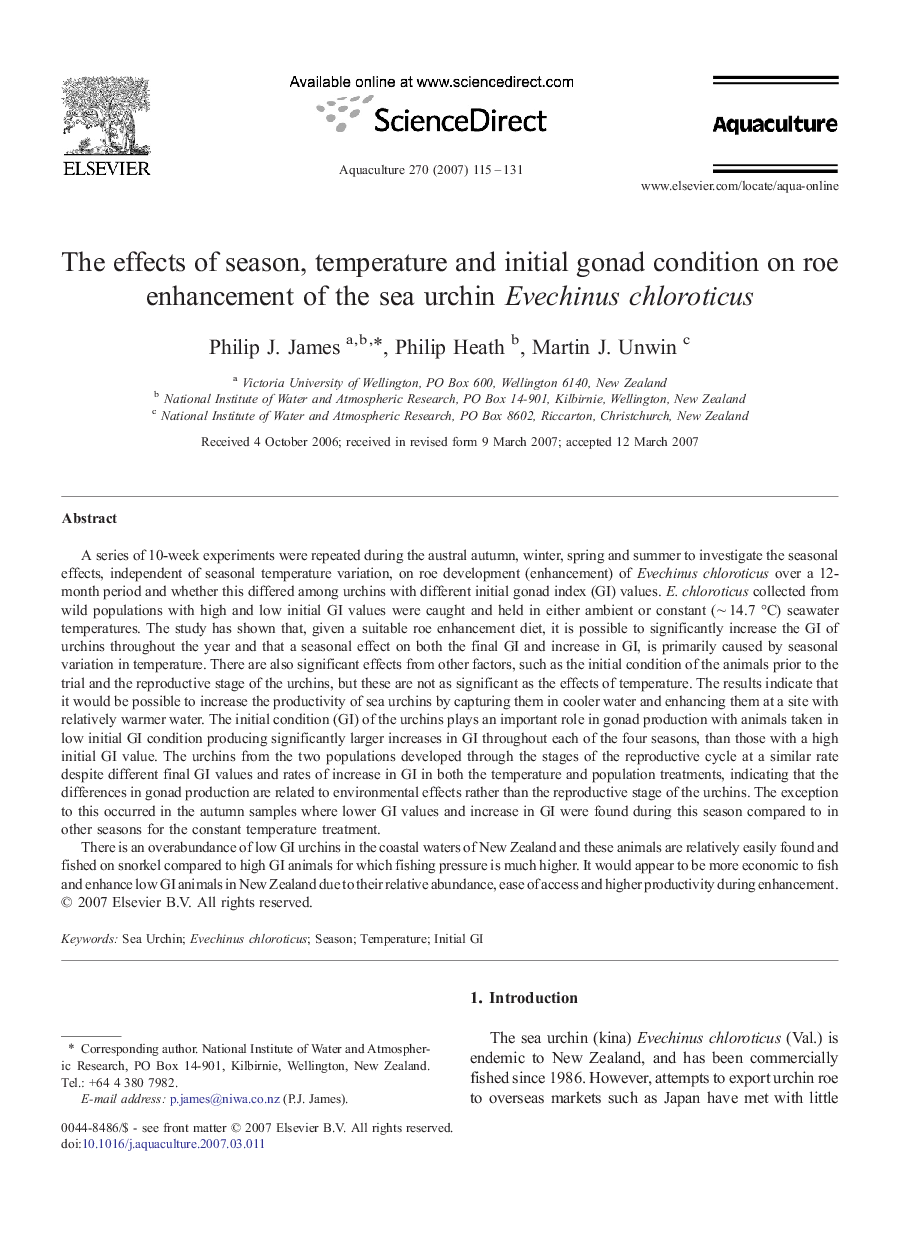| کد مقاله | کد نشریه | سال انتشار | مقاله انگلیسی | نسخه تمام متن |
|---|---|---|---|---|
| 2425035 | 1552972 | 2007 | 17 صفحه PDF | دانلود رایگان |

A series of 10-week experiments were repeated during the austral autumn, winter, spring and summer to investigate the seasonal effects, independent of seasonal temperature variation, on roe development (enhancement) of Evechinus chloroticus over a 12-month period and whether this differed among urchins with different initial gonad index (GI) values. E. chloroticus collected from wild populations with high and low initial GI values were caught and held in either ambient or constant (∼ 14.7 °C) seawater temperatures. The study has shown that, given a suitable roe enhancement diet, it is possible to significantly increase the GI of urchins throughout the year and that a seasonal effect on both the final GI and increase in GI, is primarily caused by seasonal variation in temperature. There are also significant effects from other factors, such as the initial condition of the animals prior to the trial and the reproductive stage of the urchins, but these are not as significant as the effects of temperature. The results indicate that it would be possible to increase the productivity of sea urchins by capturing them in cooler water and enhancing them at a site with relatively warmer water. The initial condition (GI) of the urchins plays an important role in gonad production with animals taken in low initial GI condition producing significantly larger increases in GI throughout each of the four seasons, than those with a high initial GI value. The urchins from the two populations developed through the stages of the reproductive cycle at a similar rate despite different final GI values and rates of increase in GI in both the temperature and population treatments, indicating that the differences in gonad production are related to environmental effects rather than the reproductive stage of the urchins. The exception to this occurred in the autumn samples where lower GI values and increase in GI were found during this season compared to in other seasons for the constant temperature treatment.There is an overabundance of low GI urchins in the coastal waters of New Zealand and these animals are relatively easily found and fished on snorkel compared to high GI animals for which fishing pressure is much higher. It would appear to be more economic to fish and enhance low GI animals in New Zealand due to their relative abundance, ease of access and higher productivity during enhancement.
Journal: Aquaculture - Volume 270, Issues 1–4, 28 September 2007, Pages 115–131